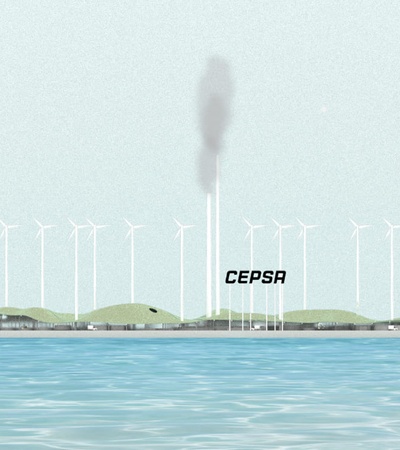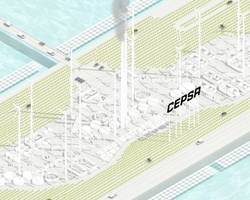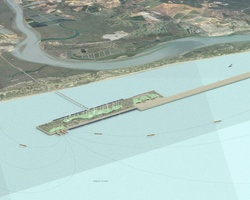
- Home
- Student Projects
- Cepsa Island: A Vision For Sustainable Aviation & Coastal Protection
Cepsa Island: A Vision for Sustainable Aviation & Coastal Protection
Cepsa Island is a groundbreaking initiative designed to address two critical environmental issues: the high CO2 emissions from private jets and coastal erosion due to climate change. By integrating advanced technology in sustainable aviation fuel (SAF) production with innovative coastal defense strategies, Cepsa Island represents a forward-thinking solution for both aviation and environmental sustainability.
Private jets, while providing convenience, significantly contribute to CO2 emissions. However, using SAF could reduce these emissions by up to 80%. Cepsa, a global leader in SAF production, currently utilizes crop residues and used cooking oils to create this eco-friendly fuel. The Cepsa Island project aims to enhance this effort by combining SAF production with coastal protection.
Situated off Spain’s “Costa de la Luz,” near Huelva and Cádiz, Cepsa Island will feature a private jet landing area and an executive terminal. The island will house a cutting-edge SAF production facility that not only supplies fuel but also helps protect the coastline from rising sea levels. The island’s elongated shape enhances its ability to shield the coast, with a 2 km landing strip and infrastructure designed for efficient fuel production and distribution.
The island's design emphasizes sustainability through the repurposing of aviation materials. Engine oil will be converted into concrete blocks, runway asphalt into coastal roads, aircraft tires into artificial reefs, and fuselages into coastal structures. This innovative reuse of materials minimizes waste and supports sustainable development.
The infrastructure includes hangars for private jets, a combined factory and executive terminal to promote transparency about SAF production, and a port for cargo operations. Additionally, wind turbines and solar panels will ensure that the island operates with minimal environmental impact, underscoring its commitment to sustainability.
Cepsa Island is envisioned as a scalable model, with plans to expand along the Spanish coast. Each new island will be tailored to local needs, potentially excluding features like private airports where not needed. This expansion aims to protect vulnerable coastal areas and promote broader SAF adoption, setting a new standard for sustainable luxury travel and environmental stewardship.


